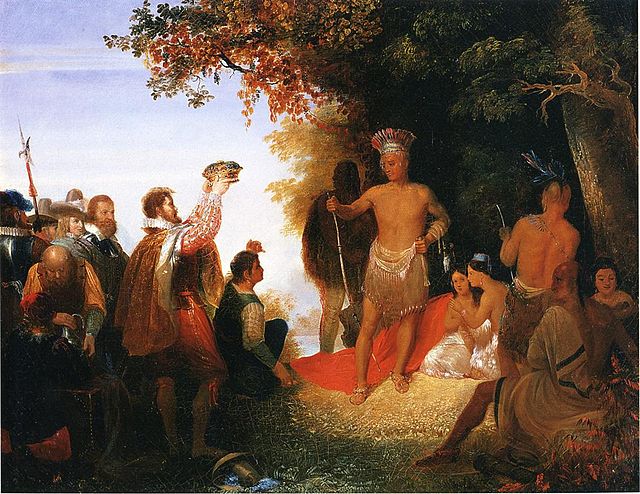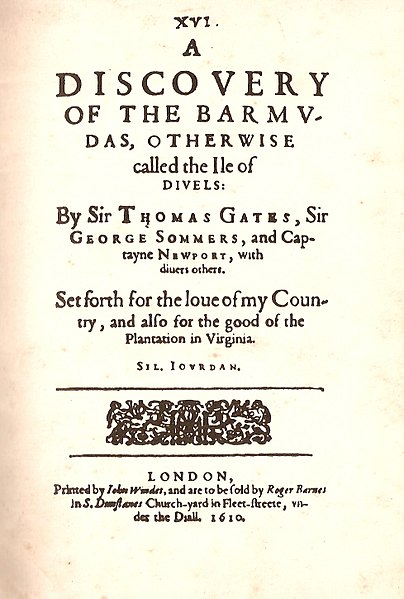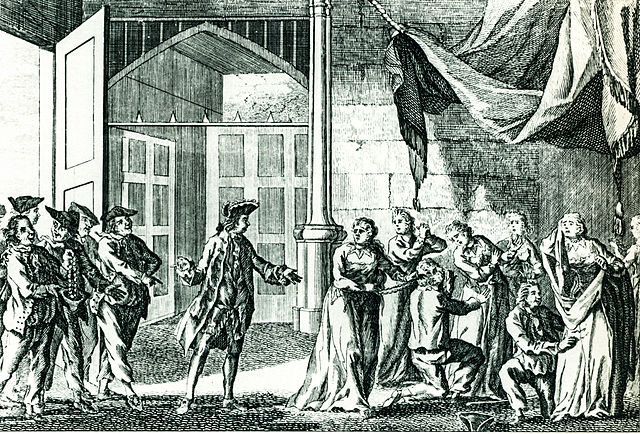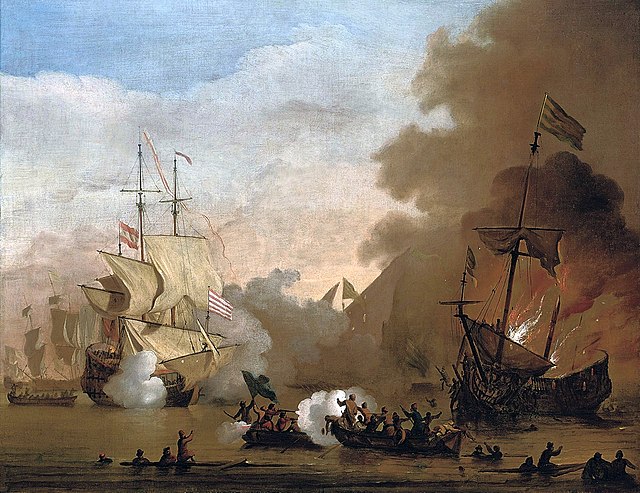Christopher Newport (1561–1617) was an English seaman and privateer. He is best known as the captain of the Susan Constant, the largest of three ships which carried settlers for the Virginia Company in 1607 on the way to found the settlement at Jamestown in the Virginia Colony, which became the first permanent English settlement in North America. He was also in overall command of the other two ships on that initial voyage, in order of their size, the Godspeed and the Discovery.
Statue of Christopher Newport on the campus at Christopher Newport University depicts him with both arms, prior to the loss of one arm in the Anglo-Spanish War. Monumental Sculpture by Jon Hair.
Model of the Portuguese Carrack Madre de Deus. Newport helped in the capture of this large rich vessel off the Azores in 1592
The Coronation of Powhatan, oil on canvas, John Gadsby Chapman, 1835
Silvester Jourdain's "A Discovery of the Barmudas"
A privateer is a private person or vessel which engages in maritime warfare under a commission of war. Since robbery under arms was a common aspect of seaborne trade, until the early 19th century all merchant ships carried arms. A sovereign or delegated authority issued commissions, also referred to as letters of marque, during wartime. The commission empowered the holder to carry on all forms of hostility permissible at sea by the usages of war. This included attacking foreign vessels and taking them as prizes and taking crews prisoner for exchange. Captured ships were subject to condemnation and sale under prize law, with the proceeds divided by percentage between the privateer's sponsors, shipowners, captains and crew. A percentage share usually went to the issuer of the commission.
East Indiaman Kent (left) battling Confiance, a privateer commanded by French corsair Robert Surcouf in October 1800, as depicted in a painting by Ambroise Louis Garneray.
Woodes Rogers' men search Spanish ladies for their jewels in Guayaquil, 1709
An action between an English ship and vessels of the Barbary corsairs
Bermuda Gazette of 12 November 1796, calling for privateering against Spain and its allies during the 1796 to 1808 Anglo-Spanish War, and with advertisements for crew for two privateer vessels.








